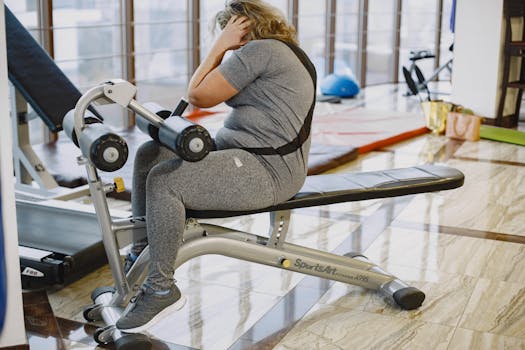
Unlocking Fat Burn: The Power of Short Bursts of Intense Exercise
Takeaways: Short bursts of intense exercises, also known as High-Intensity Interval Training (HIIT), can significantly enhance fat burning and improve cardiovascular fitness. Incorporating these workouts into your fitness routine can lead to greater metabolic benefits and time efficiency.
In the pursuit of weight loss and improved fitness, many individuals are on the lookout for effective strategies that yield quick results. One of the most promising approaches is the practice of short bursts of intense exercise, often referred to as High-Intensity Interval Training (HIIT). This article delves into the science behind HIIT, its benefits for fat burning, and practical tips to integrate it into your workout regimens.
Understanding High-Intensity Interval Training (HIIT)

During HIIT, the body utilizes both aerobic and anaerobic energy systems. The intense bursts push your body to exert maximum effort for a short period, typically lasting from 20 seconds to a few minutes. This is followed by a recovery phase, which can involve complete rest or low-intensity activity.
Research shows that HIIT can be more effective for fat loss compared to steady-state cardio. The reason lies in the afterburn effect, scientifically known as excess post-exercise oxygen consumption (EPOC). After a HIIT session, your body continues to burn calories at an elevated rate, which can last several hours post-exercise.
The Benefits of Short Bursts of Intense Exercise
1. Time Efficiency: One of the most appealing aspects of HIIT is that it can be completed in a fraction of the time required for traditional workouts. A 20-30 minute HIIT session can be as effective, if not more so, than an hour of steady cardio.
2. Increased Metabolism: HIIT workouts can significantly elevate your metabolic rate, not just during the workout but also in the hours that follow. This can lead to greater overall calorie burn throughout the day.
3. Improved Cardiovascular Health: Short bursts of intense activity can enhance your cardiovascular fitness. Studies indicate that HIIT can improve heart health, increase VO2 max, and lower blood pressure.
4. Flexibility and Variety: HIIT can be adapted to various forms of exercise, including running, cycling, swimming, and bodyweight workouts, making it a versatile option for anyone looking to diversify their fitness routine.
5. Fat Loss: Numerous studies suggest that HIIT can help participants lose more fat in a shorter period compared to traditional exercise methods. This is particularly beneficial for those struggling to shed stubborn body fat.
Incorporating HIIT into Your Routine
To get started with HIIT, you don’t need to be a fitness expert. Here are some simple steps to incorporate high-intensity workouts into your routine:
1. Choose Your Exercise: Select activities that you enjoy. This could be sprinting, cycling, jump rope, or bodyweight exercises like burpees and push-ups.
2. Set Your Intervals: A common beginner structure is 30 seconds of high-intensity effort followed by 30 seconds of rest. Aim for a total workout duration of 15-30 minutes.
3. Warm-Up: Always start with a warm-up to prepare your body for intense activity. Dynamic stretches or light cardio can be effective.
4. Cool Down: After your workout, allow time for a cool-down and stretching session to aid recovery and flexibility.
5. Frequency: Aim to include HIIT sessions 2-3 times per week, allowing for recovery days in between to prevent overtraining.
Conclusion
Short bursts of intense exercise, or HIIT, present a powerful tool for those looking to maximize fat burn and improve overall fitness efficiently. With its myriad benefits, including increased metabolism, time efficiency, and enhanced cardiovascular health, HIIT can transform your fitness journey. Whether you’re a beginner or an experienced athlete, integrating HIIT into your routine can yield significant results. Get started today, and unlock the potential of your workouts!







